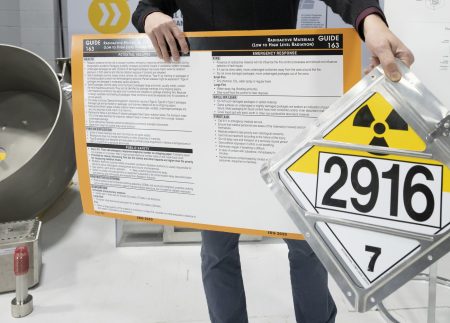Victor Chapis says his expertise at St. Joseph’s Indian Residential Faculty in Thunder Bay, Ont., destroyed his self-worth — however he is beginning to see a shift within the subsequent era as extra folks in his group embrace their Indigenous tradition.
“My very own trauma of being in residential faculty is popping out of there and feeling empty inside, feeling not ok,” stated Chapis, an elder from Ginoogaming First Nation in northern Ontario. “Not figuring out if I am welcomed in any retailer or within the hospital or within the faculty or any establishment.”
Chapis turned to alcohol to deal with his experiences at St. Joseph’s. He obtained assist by Alcoholics Nameless, however even in restoration, he stated he nonetheless struggles with self-doubt.
“It is all the time inside me that I am not ok due to [residential] faculty. If you happen to get a 98 per cent in your take a look at, they do not consider what you probably did proper, they consider what you probably did flawed,” he stated.
“They do not make you are feeling like you’re value something otherwise you’re a human being.”
It is estimated that greater than 150,000 Indigenous, Métis and Inuit youngsters in Canada had been taken to Indian residential faculties between the 1870s and the Nineties. The Reality and Reconciliation Fee (TRC) of Canada discovered that these faculties had been “a scientific, government-sponsored try to destroy Aboriginal cultures and languages and to assimilate Aboriginal peoples in order that they now not existed as distinct peoples.”
Columnists from CBC Radio5:35Dismal year-end report card on accomplished TRC Calls, Indigenous thinktank says
For the second time since 2020, Canada accomplished not one of the Reality and Reconciliation Fee’s 94 Calls to Motion this 12 months, the Yellowhead Institute says. Eva Jewell and Ian Mosby say at Canada’s present tempo, the 94 Calls is not going to be full till 2081. CBC Radio’s Kyle Muzyka studies.
The TRC’s 94 calls to motion, which had been made in 2015, goal to handle the continuing challenges skilled by Indigenous folks because of the Indian residential faculty system, and stop something related from taking place once more. In accordance with the Yellowhead Institute’s 2023 report, “Calls to Motion Accountability,” 13 of those calls have been accomplished.
Chapis sits on a committee with Nishnawbe Aski Nation, which represents 49 First Nations throughout Treaties 9 and 5, that’s creating a protocol to repatriate the stays of those that by no means made it dwelling from Indian residential faculty.
“There’s many throughout Turtle Island which are in unmarked graves,” he stated. “Each time I smoke my pipe, I put an additional pinch of tobacco in my pipe and pray for these folks.”
‘The loneliness is what will get you’
Elder Veronica Waboose, former chief of Lengthy Lake #58 First Nation, was despatched to St. Joseph’s Indian Residential Faculty as a youngster.
“The loneliness is what will get you,” she stated of her expertise there. “You miss your loved ones and you’ve got by no means been away from them earlier than.”
A plaque acknowledges St. Joseph’s Indian Residential Faculty in Thunder Bay, Ont., which operated from 1870 till 1966. (Marc Doucette/CBC)
One evening, she and her good friend, Genevieve, determined to depart. They made their approach from Thunder Bay to Nipigon, the place they stayed with Genevieve’s uncle till their mother and father introduced them again to Lengthy Lake #58, Waboose stated.
Two weeks later, an RCMP officer got here to Waboose’s home and threatened to take her again to St. Joseph’s, however her mom would not let him.
‘”The place had been you once they had been wandering the streets of Thunder Bay?’ she instructed them. ‘The place had been you? How come you were not there? They may have froze,'” Waboose remembers her mom telling the officer.
“So, he went away and by no means got here again.”
Elder Veronica Waboose, former chief of Lengthy Lake #58 First Nation, says she and her good friend left St. Joseph’s Indian Residential Faculty in Thunder Bay, Ont., as youngsters. (Marc Doucette/CBC)
Waboose stated it was years earlier than she introduced her youngsters out on the land and taught them conventional practices, due to the racism she skilled being Indigenous.
“I broken my youngsters for doing that as a result of we’re not the rest however native. I discovered that out myself. Regardless that I am 81, I am nonetheless studying to return to my Indian approach — the best way I used to be earlier than,” she stated.
Now, she sees younger folks in her group studying the Ojibway language, however stated it’s going to take time to revive the cultural data misplaced among the many generations that attended residential faculty.
Being a survivor
For Kiiwetinoong MPP Sol Mamakwa, the idea of being an Indian residential faculty survivor is difficult. Mamakwa is from Kingfisher Lake First Nation and was despatched to Stirland Lake Residential Faculty as a younger teenager.
“A survivor can imply an individual that really lived by it, that’s alive, however there are others that would not stay by it — whether or not it is addictions, psychological well being, whether or not it is loss of life by suicide,” he stated.
 Kiiwetinoong MPP Sol Mamakwa is seen asking a query in Oji-Cree within the Ontario Legislature for the primary time. Mamakwa says being a residential faculty survivor is difficult, as a result of not all points of his id survived the expertise. (Evan Mitsui/CBC)
Kiiwetinoong MPP Sol Mamakwa is seen asking a query in Oji-Cree within the Ontario Legislature for the primary time. Mamakwa says being a residential faculty survivor is difficult, as a result of not all points of his id survived the expertise. (Evan Mitsui/CBC)
Earlier this 12 months, Mamakwa turned the primary MPP to ask a query in Anishininiimowin, recognized in English as Oji-Cree, within the Ontario Legislature. He was not allowed to talk his language at Indian residential faculty.
“I will communicate the language nonetheless. I will practise the methods of life, and in that approach I survived,” he stated. “However even me, the normal practices just like the pow-wow and stuff, these had been the [things] I missed.
“I am a survivor, however in that approach I am not.”
Mamakwa stated he needs to see funding for therapeutic lodges, the place folks can come to phrases with the trauma they’ve skilled by the Indian residential faculty system.
However he additionally needs to see each the provincial and federal governments step up with extra constant funding for First Nations infrastructure — the whole lot from water to housing and well being care.
“We have to get the federal government to cease doing incremental modifications to funding. Incremental change perpetuates the disaster in our communities,” Mamakwa stated.
“We want to have the ability to present full funding for these applications, for these companies and this infrastructure that we want in these First Nations for households.”
Again in Ginoogaming First Nation, Chapis is engaged on practising self-confidence. His largest motivator is the kids in his life.
“My great-granddaughters really feel they belong anyplace they wanna go. They’re joyful. They are not afraid. They arrive right into a constructing and so they run identical to they belong,” Chapis stated. “I by no means felt that.”
“These are the form of healings that I see which are taking place inside my household.”
A nationwide Indian Residential Faculty Disaster Line is offered to offer assist for survivors and people affected. Folks can entry emotional and disaster referral companies by calling the 24-hour service at 1-866-925-4419.
Psychological well being counselling and disaster assist can be accessible 24/7 by the Hope for Wellness hotline at 1-855-242-3310 or by on-line chat.







